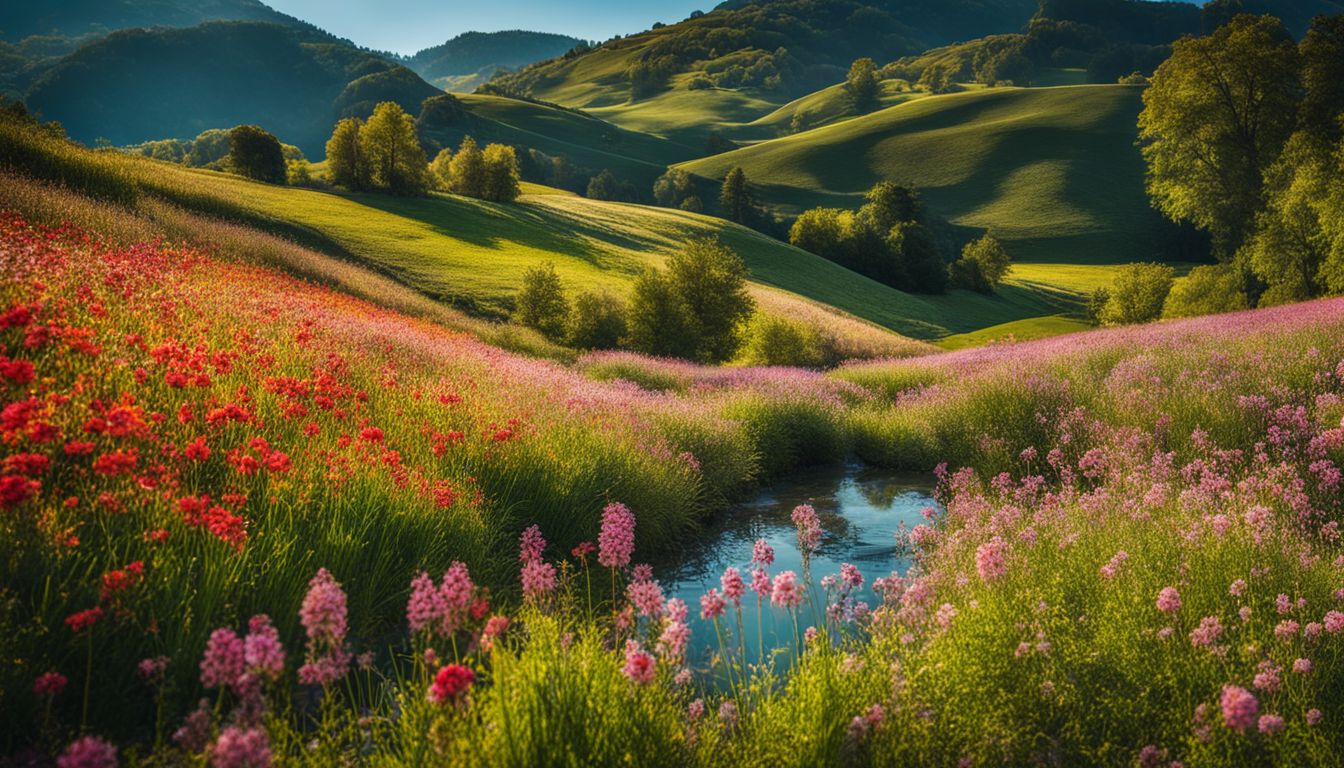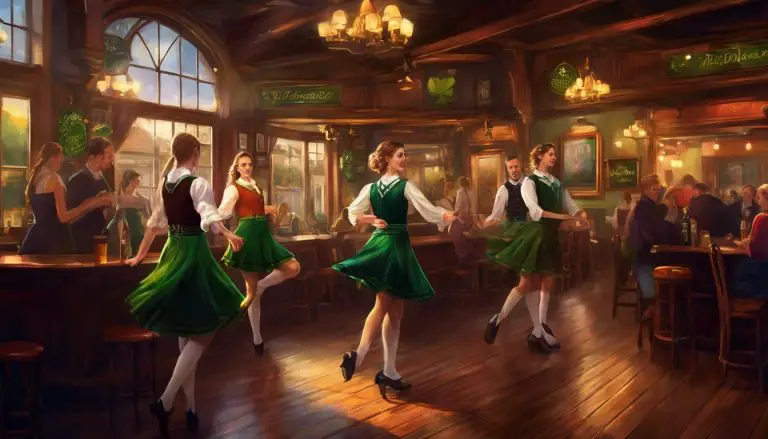The Ultimate Guide to the Best Time of Year to Visit Ireland
Deciding on the ideal time to explore Ireland can feel like a puzzle. I’ve navigated this maze myself, discovering that May, September, and October emerge as the sweet spots for a journey.
To ease your planning, I’ve poured what I learned into this guide. It’ll walk you through each season’s charm, from weather patterns to activities worth experiencing. Let’s jump in and find that perfect moment for your memorable Irish adventure!
Key Takeaways
- Ireland’s weather and tourist seasons vary, making May, September, and October great months to visit. These times offer mild weather, fewer crowds, and vibrant festivals.
- Summer in Ireland (June – August) is warm with long daylight hours perfect for outdoor activities but expect more tourists. Winter provides a quieter experience with lower costs.
- Festivals are big in Ireland throughout the year. From music to food to literature events in summer and colorful fall festivals in September and October.
- The countryside blooms beautifully in spring (March – May), ideal for nature walks. St. Patrick’s Day in March is a highlight with parades across the country.
- Late spring through early summer (April – June) is perfect for golf lovers and coastal drives amidst blooming landscapes.
The Seasons in Ireland
Ireland experiences four distinct seasons: summer, autumn, winter, and spring. Each season offers its unique charm and attractions for visitors to enjoy.
Summer (June-August)
Summer brings Ireland to life with sunny days and vibrant festivals. This is the peak season for travel, meaning there are lots of people everywhere. Expect crowds at popular tourist spots and bustling streets in cities like Dublin and Cork.
The weather is at its best, making it perfect for exploring coastal drives, green hills, and historic sites.
Festivals fill the calendar, from music to food to literature. You’ll never run out of things to do or places to see. If you love being around energy and excitement, summer in Ireland won’t disappoint you.
Sunny days also mean longer daylight hours for sightseeing.
As summer winds down, prepare for a shift in pace and scenery moving into autumn.
Autumn (September-November)
Autumn, from September to November, is consistently popular for visiting Ireland. These months offer pleasant weather and are known for vibrant festivals and stunning fall colors all across the country.
It’s an ideal time for travelers seeking the perfect blend of good weather, fewer crowds, and a chance to witness the breathtaking autumn foliage that blankets Ireland during this time.
The Shoulder Season months of September and October are highly recommended due to their combination of comfortable weather conditions and exciting events happening throughout the country.
If you’re looking to experience Ireland at its most picturesque with milder weather compared to summer, then Autumn is definitely worth considering.
The season showcases why it’s one of the best times to visit Ireland; picture magnificent landscapes adorned in stunning hues of reds, yellows, and oranges as nature puts on a splendid display before winter sets in.
Winter (December-February)
Winter in Ireland, especially from December to February, is known for its chilly and damp weather. The days are shorter with fewer daylight hours for outdoor activities. However, if you’re a budget traveler or prefer fewer crowds, this might be the best time for your Ireland visit.
During these months, accommodation prices tend to drop, making it more affordable to explore the country’s beauty. Keep in mind that some attractions and tours may have reduced operating hours during winter.
But don’t worry – there’s still plenty of cozy pubs to warm up in and enjoy the local hospitality.
Spring (March-May)
Spring in Ireland, specifically March to May, brings pleasant weather and fewer crowds. During this time, the country blooms with vibrant flowers and lush greenery. It’s a perfect season for exploring Ireland’s stunning coastlines and picturesque landscapes.
The mild temperatures make outdoor activities enjoyable, and it’s an ideal time for scenic drives along the coast. Additionally, spring hosts St. Patrick’s Day celebrations across the country – a lively cultural experience not to be missed! If you prefer less crowded experiences without compromising on favorable weather conditions, then spring is undoubtedly one of the best times to visit Ireland.
Best Time to Visit Ireland
The best time to visit Ireland varies throughout the year, offering unique experiences in each season. For more details on the optimal time for your travel plans, keep reading!
Peak season (June-early September)
June to early September presents peak season in Ireland. These months boast long daylight hours, perfect for exploring the stunning landscapes and soaking up Ireland’s rich culture.
Festivals abound during this time, offering a wonderful blend of traditional music, dance, and food. However, it’s advisable to plan ahead due to increased crowds and higher prices during these popular months.
The weather is generally warm but can be unpredictable with intermittent rain showers; therefore, packing layers and waterproof gear is essential for an enjoyable trip.
Off-season (November-February)
November through February is considered the off-season in Ireland. During this time, visitors can experience a quieter and more budget-friendly side of the country. The winter months offer shorter daylight hours, but there are still plenty of indoor activities to enjoy such as exploring historic sites, visiting museums, or cozying up in traditional Irish pubs.
Additionally, those traveling during this period may be able to find more affordable accommodations and experience fewer crowds at popular tourist attractions.
In November through February, the weather tends to be cooler and wetter than other times of the year so it’s important to pack accordingly. However, these months present a unique opportunity for travelers looking for a more tranquil and authentic Irish experience without the hustle and bustle of peak tourist season.
Spring (March)
Spring in Ireland, especially in March, marks the beginning of warmer weather and longer days. The countryside comes alive with blooming flowers and lush green landscapes. St. Patrick’s Day festivities take place throughout the country, offering a vibrant cultural experience with parades, music, and traditional Irish celebrations.
It’s an excellent time to explore historic sites before the peak tourist season begins.
Looking ahead to more exciting activities during late spring and early summer will be beneficial for your travel plans.
Late Spring/Summer (April-June)
Transitioning from the spring to the late spring/summer season, April to June in Ireland brings a beautiful burst of life and color. The landscape is adorned with blooming flowers, lush greenery, and longer daylight hours.
This period marks the perfect time for coastal drives, golf outings amidst vibrant floral scenery, and enjoying sunny days along Ireland’s picturesque coastlines. Additionally, this time offers an abundance of festivals and events that bring together locals and visitors alike for an authentic cultural experience.
With pleasant weather and fewer crowds than peak summer months, late spring through early summer presents an ideal window for exploring the enchanting sights of Ireland.
The favorable climate during late spring and early summer provides ample opportunities to absorb the beauty of Ireland in full bloom while partaking in various outdoor activities such as hiking or simply taking leisurely strolls throughout cities and countryside.
Early Fall (September-October)
September and October bring a delightful time to visit Ireland, as the early fall season graces the country with colorful landscapes and mild weather. During this period, you can experience an array of festivals and immerse yourself in the stunning fall colors that blanket the countryside.
The bustling energy of Dublin’s Theatre Festival and Galway International Oyster & Seafood Festival are just a few highlights during this time, making it an ideal window for experiencing Irish culture at its best.
For those planning their trip to Ireland, September and October present a unique opportunity to witness the vivid autumn scenery while enjoying milder temperatures. As I transition into discussing “Things to Do in Ireland During Different Seasons,” I’ll be unraveling various activities suited for each season across the splendid landscapes of Ireland.
Things to Do in Ireland During the Different Seasons
Explore fall festivals and vibrant autumn colors from September to October, indulge in budget traveling experiences during November to February, immerse in the St. Patrick’s Day celebrations in March, enjoy golfing, blossoming flowers, and coastal drives from April to June and embrace sunny days and lively crowds from July to August.
For more exciting activities throughout the seasons of Ireland, delve further into the blog.
Festivals and Fall Colors (September-October)
September and October in Ireland are a delightful spectacle of vibrant fall colors, making it the perfect time for leaf-peeping enthusiasts. The countryside transforms into a picturesque canvas of reds, oranges, and yellows, offering breathtaking views as you explore the rolling hills and lush forests.
These months also host numerous lively festivals all over the country, providing a rich cultural experience. From music celebrations to food and drink events, there’s something for everyone to enjoy amidst the stunning autumn backdrop.
Soak in the festive atmosphere while immersing yourself in Irish traditions during this wonderful time of year.
Budget Traveling (November-February)
Looking to travel on a budget? November to February is your window. In these months, you’ll find cheaper accommodations and deals on attractions. Ireland’s offseason offers a chance to explore without the summer crowds, giving you an authentic experience of the country.
Whether it’s visiting cozy pubs or braving coastal walks, this time provides its own charm. So if you’re ready for an affordable adventure, let’s dive into what Ireland has in store for budget travelers during this time.
Next up – “St. Patrick’s Day (March)”.
St. Patrick’s Day (March)
Transitioning from budget travel to the lively celebrations of St. Patrick’s Day, March in Ireland heralds a vibrant and spirited atmosphere. The festivities include parades, traditional music, dance, and a sea of green as locals and visitors come together to celebrate Irish heritage.
The weather may still be chilly, but the warmth of the celebrations makes it an unforgettable experience. It’s when iconic landmarks like Dublin’s St. Patrick’s Cathedral come alive with events and performances.
The electric energy surrounding St. Patrick’s Day resonates throughout Ireland during March – perfect for those seeking cultural immersion or simply an exciting holiday experience!
Golf, Flowers, and Coastal Drives (April-June)
April to June is a fantastic time to visit Ireland for golf enthusiasts and nature lovers. The weather during these months enhances the scenic coastal drives, where you can admire the vibrant spring flowers in full bloom.
Golfing in Ireland is exceptional, especially during late spring when the courses are lush and green. The mild climate creates perfect conditions for exploring the stunning coastline by car, offering breathtaking views of the Irish seascape.
Whether you’re a keen golfer or simply appreciate beautiful landscapes, April to June is an optimal time to experience Ireland’s natural beauty and world-renowned golf courses.
Sunny Days and Crowds (July-August)
July and August in Ireland bring sunny days and bustling crowds. The summer temperatures range from 60°F to 70°F, ideal for exploring the outdoors. This is the peak season for tourists, so popular attractions can get crowded, especially along the coast and in major cities like Dublin.
However, don’t miss out on vibrant festivals and events happening across the country during this time. From music festivals to outdoor markets, there’s something for everyone to enjoy during these warm months.
The sun stays up until late evening hours allowing plenty of time for sightseeing or enjoying a leisurely stroll through Ireland’s picturesque landscapes. It is an excellent time for hikers since many trails are easily accessible due to the weather conditions; it’s also perfect weather for coastal drives with scenic views around every bend.
Conclusion
Ireland shines best in May, September, and October. These months blend perfect weather with exciting festivals and fewer crowds. It’s the sweet spot for both new visitors and seasoned travelers to Ireland.
May springs into life with blossoming flowers and vibrant green landscapes. It’s a wonderland for photographers and nature lovers alike. Festivals kick off, offering a taste of Irish culture without the summer crowds.
September rolls in with its autumnal hues painting the countryside in fiery reds and golds. This period hosts some of Ireland’s most iconic festivals, immersing travelers in rich traditions and lively music scenes.
October continues to charm with its crisp air and shorter days, inviting cozy evenings by the fire after days spent exploring historic castles or strolling through ancient forests bathed in fall colors.
For those on a budget or looking to avoid crowds altogether, November to February offers solace. The cooler months might mean more indoor activities but also provide unique experiences at lower costs.
Spring blooms not just flowers but opportunities for sightseeing under milder skies from March through early June. Days grow longer, making it ideal for road trips along coastlines or golfing adventures on world-class courses.
July and August bring warmth and sunshine but also draw the biggest crowds. These months are peak tourist season when Ireland’s natural beauty is at its most accessible albeit alongside many others seeking the same experiences.
Visiting during these prime times ensures an unforgettable journey filled with cultural festivities, outdoor adventures, picturesque sceneries, budget-friendly options during off-peak seasons while experiencing everything that makes Ireland truly magical – whether it’s your first visit or your hundredth.







